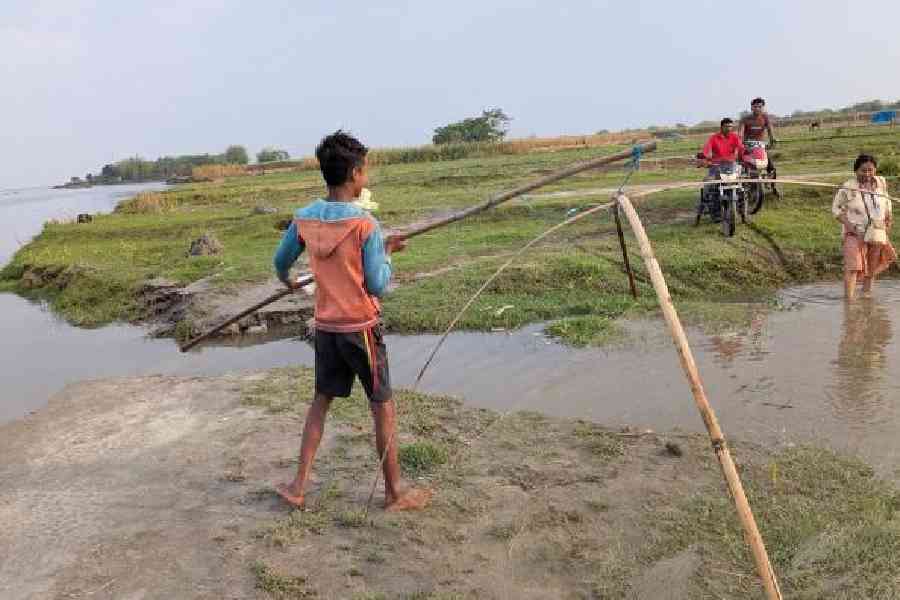climate change and Char life


The people in Bowalmari Nandanpur village in Jalpaiguri district can’t forget the horpa baan or flash flood two years ago. The village is located on Nijtaraf Char, a riverine island formed by the deposition of sand and silt in the Teesta. The villagers are not aware of the term glacial lake outburst flood (GLOF). Neither do they know what climate change means, but they have traumatic memories of the fury of Teesta as its raging waters swept away their homesteads, farmlands and animals.
Farmers like Jitendra Chandra Biswas and nonagenarian Nepal Sarkar had never seen such ferocity of the river since they made the char their home eight decades ago.
The deadly South Lhonak lake GLOF in Sikkim in October 2023 was triggered by the collapse of 14.7 million cubic metres of frozen moraine, releasing a tsunami-like wave that devastated the Teesta Valley and chars downstream in Jalpaiguri, Coochbehar and Bangladesh. Recent studies have confirmed that climate change played a crucial role in it.
“Since the flash flood was induced by climate change, the char dwellers couldn’t apprehend its sudden attack. Neither could any weather forecasting system provide a advance warning. As a result, they failed to save their animals and houses,” said Mehebub Sahana, Leverhulme fellow and lecturer in geographical information system at the University of Manchester in the UK. Sahana recently visited the char with a team of researchers who conducted a workshop with the inhabitants to find out indigenous knowledge that might help them fight the impact of global warming. “The fisherfolk and farmers here have devised their own methods to predict floods,” he added. For instance, they know a devastating flood is in the making when ants rush to treetops carrying their eggs.
The Manchester team was supported by associate geographers from Presidency, North Bengal and Coochbehar Panchanan Barma universities. Key support was provided by professors Arindam Basak and Snehasish Saha from North Bengal University. Saha said, “We are trying to gauge river bank erosion vulnerability in the char and along the banks of the Teesta by studying the bank erosion hazard index. Thus we can understand the hydraulic imbalance caused by flash floods from a glacier-fed Himalayan river.”
Sahana and his team also discussed with people their challenges and future aspirations. Based on local knowledge, the team is working on a solution to help them combat future climate change disasters. Alladi Roy, a 55-year-old woman, runs a multipurpose shop on the char. She said, “Normally, we welcome floods because later we have a bountiful harvest. We have learnt to live with such monsoon floods but are helpless against a horpa baan. If this happens time and again, we will have to migrate.”
Sarkar, 92, has no wish to leave the char. He believes the river is their ally. He says, “Humans mess with the flow and interfere with the river’s course. They build dams and embankments, so the river turns furious.”